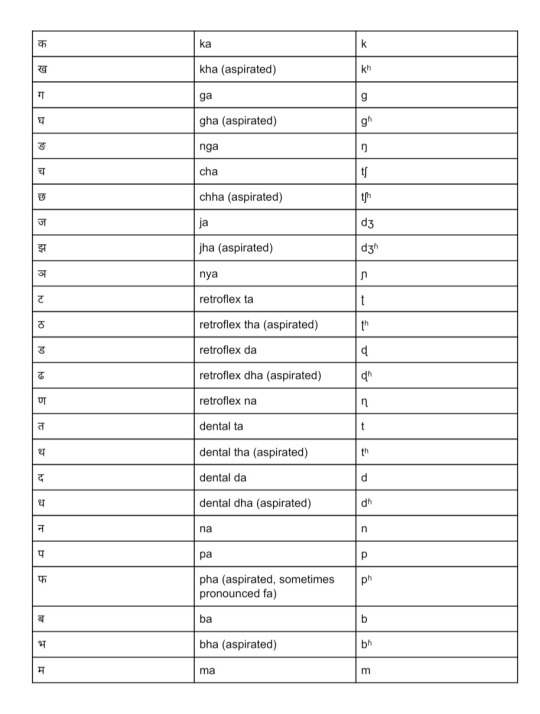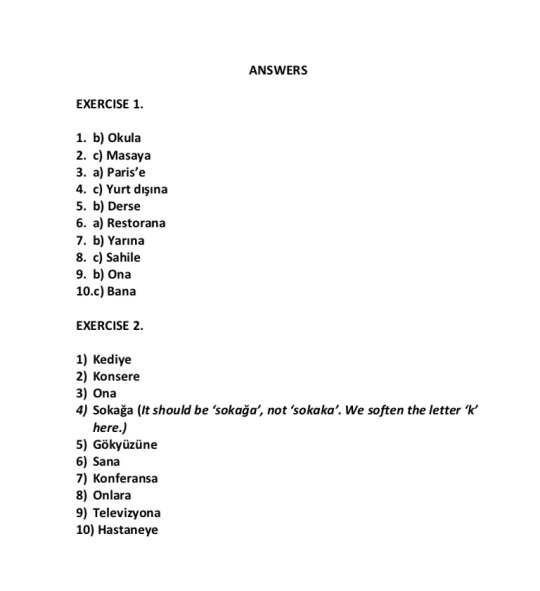Note
Merhaba! This isn't a question, but I just want to say thank you so much for your Turkish lessons! They help me so much when I study the Turkish language.
thank you!! We'll definitely try and be more regular with them if they're this helpful to y'all :0
17 notes
·
View notes
Text
Nature Vocabulary in Sanskrit

nature = प्रकृति [f] (prakrti)
earth = पृथ्वी [f] (prthvī)
ground / land = भूमि [f] (bhūmi)
stone = अश्मन् [m] (ashman)
water = जल [n] (jala), अप् [f] (ap)
river = नदी [f] (nadī)
lake = सरोवर [m] (sarasovar)
sea = समुद्र [m] (samudra)
sun = स्वर् [m] (svar), सूर्य* [m] (sūrya)
sky = द्यु [m] (dyū)
rain = वृष्टि [f] (vrshṭi)
snow = हिम [m] (hima) - whence Himalayas
cloud = मेघ [m] (megha)
season = ऋतु [m] (rtu)
Spring = वसन्त [m] (vasanta)
Summer = ग्रीष्म [m] (grīshma)
Monsoon = वर्षा [f] (vrshā)
Autumn = शरद् [f] (sharad)
Winter = हेमन्त [m] (hemanta)
cold season = शिशिर [m] (shishira)
fire = अग्नि [m] (agni), पावक* [m] (pāvaka)
tree = वृक्ष [m] (vrksha), तरु [m] (taru)
wood = द्रु [m] (drū)
leaf = पत्र [n] (patra)
flower = पुष्प [n] (pushpa), पुल्ल [n] (pulla)
fruit = फल [n] (phala)
forest = वन [n] (vana), अरण्य [n] (araṇya)
mountain = पर्वत [m] (parvata)
jungle, wasteland, desert = जङ्गल [m] (jangala)
animal = प्राणी [m] (prāṇī)
elephant = गज [m] (gaja), हस्तिन् [m] (hastin)
monkey = वानर [m] (vānara)
deer, antelope = मृग [m] (mrga)
tiger = व्याघ्र [m] (vyāghra)
lion = सिंह [m] (simha)
wolf = वृक [m] (vrka)
bird = वि [m] (vi)
eagle = गरुड [m] (garuḍa)
snake = सर्प [m] (sarpa)
*may also refer to deities
374 notes
·
View notes
Text
Hindi Lesson 2: Varnamala pt 2
Consonants in Hindi are called vyanjan and they’re mostly arranged according to the manner and place of articulation, making it easy to remember the order.
Manner essentially refers to the way in which different parts of your mouth interact to create a sound, and place refers to where this interaction happens. In this lesson, we’ll cover 5 rows of vyanjan, which is 5 PLACES of articulation.
क ख ग घ ङ
च छ ज झ ञ
ट ठ ड ढ ण
त थ द ध न
प फ ब भ म
Each row goes from unvoiced to voiced (with an unaspirated and aspirated version of each) to the nasal.
Aspirated consonants are consonants followed by a little burst of air, kind of like the way the letter p is pronounced in the word "pin" in English.
Row 1 consists of VELARS, which are pronounced near the back of the mouth, around the area you'd pronounce k or g in English.
Row 2 consists of palatals, which are pronounced near the middle of the roof of the mouth, like ch in English.
Row 3 consists of retroflex consonants, which are pronounced near the roof of the mouth as well, but the tongue is curled backwards. This doesn't have an exact parallel in English, but I suggest looking them up and trying to pronounce them since these are very common sounds in Hindi.
Row 4 consists of dental consonants, which are pronounced with the tongue up against the upper teeth. Think th in “the” but with your tongue actually touching your teeth.
Row 5 consists of labial consonants, which are pronounced with the lips against each other, like m or b in English.
Let's look at these rows in detail!

To end this lesson, here are a few words that use both these consonants and the vowels from the previous lesson. These words may not seem very useful, but they’re easy to pronounce and figure out.
कलम - pen (this word has another spelling, but we’ll get to it later)
खाना - food
गंदा - dirty
घंटा - hour
चुपचाप - quietly
छाता - umbrella
जादू - magic
झंडा - flag
टोपी - cap
ठीक - fine, proper
डाँट - scolding (noun)
ढक्कन dhakkan - lid (oh what’s that weird double letter? perhaps this will be covered in the future ;))
ताकत - strength
थका - tired
दाँत - teeth
धोना - to wash
नई - new
पेट - stomach
फेंकना - to throw
बदबू - bad smell
भूख - hunger
माँ - mother
21 notes
·
View notes
Text
Hindi Lesson 1: Varnamala pt 1
Hindi is written in Devanagari, and the arrangement of all the letters is called Varnamala (garland of letters). There’s no letter case, meaning there’s no distinction between upper and lower case. It looks something like this: वर्णमाला
Above the actual letters, there’s a line that string them all together (like a garland!), and the words hang off the lines instead of resting on them, like in English.
For this lesson, let’s cover the vowels. These are called स्वर (svar). Hindi uses an abugida script, which means the vowels have secondary form called a मात्रा maatraa that is used in combination with consonants. For example, while ई would be used when it isn’t preceded by a consonant, and its maatraa, ी, is used when it IS preceded by a consonant.
Here are the svar!

The little circles represent the consonants’ position. For example, क+ी = की.
You may have noticed that अ doesn’t have a maatraa. This is because consonants inherently have the अ sound. For example, क has no written maatraa but is pronounced ka [kə].
Also, some of these don’t seem like vowels, specifically ऋ, अं, अः and अँ (similar function to अँ). However, this is just how they’re arranged and how natives learn them, so it’s best to include them when you’re learning vowels.
And those are the svar!
When we did these in school, most teachers used the following words to make the learning process easier. While we already know these words even before we learn how to read and write, and they aren’t very common or useful for beginners, but it could be interesting to know how natives learn their own language.
Don’t worry about consonants, we’ll get there soon!
अनार anaar - pomegranate
आम aam - mango
इमली imlii - tamarind
ईख iikh - sugarcane
उल्लू ulluu - owl
ऊन uun - wool
ऋषि riṣi - sage
एड़ी eṛii - heel
ऐनक ainak - glasses
ओखली okhali - mortar
औरत aurat - woman
अंगूर anguur - grapes
25 notes
·
View notes
Text
Hello!! So we’ve made some Turkish dative exercises. If you want to test yourself, here’s a chance for you!


In the second exercise YOU should add suffixes to the nouns. Do not forget that the letter in the end of the word effects the suffixes.

In the third exercise, we gave you some English sentences for you to translate into Turkish. You should translate these sentences using the dative case for sure!

I hope you find these exercises useful and enjoy doing them! If you have any advice for us please comment below.
Here is the answer key of the exercises:


#turkish#turkish exercises#turkish lessons#turkish dative#dative#dative exercises#turkish dative exercises#dative case#turkish dative case#turkish language#langblr
45 notes
·
View notes
Text
reminder that we still need natives!!
we’re looking for natives!
hi! we are a project working for creating more resources, lessons, and awareness for west asian languages.
if you have some knowledge of linguistics, and are willing to stay committed and write up content bimonthly, shoot us a message!
language natives we are looking for:
- persian
- hebrew
- arabic
- turkish
thank you! we look forward to hearing from you
- mino
162 notes
·
View notes
Text
Persian lesson 7: grammatical gender
Hey! We’re about to jump into Persian grammar. We’re keeping it light, so we’re going to talk about grammatical gender in Persian.
Just a heads up before that, we will be following this spelling convention: http://www.jahanshiri.ir/fa/en/alphabet (This is also an excellent Persian grammar resource.) Bit of linguistics terminology: we’re not using the IPA despite it being more accurate, as that would limit accessability of these lessons
Firstly, unlike a lot of languages like French or Italian, Persian grammar is genderless. This means that words don’t have a masculine or feminine form [in verbs, adjectives and pronouns], exactly like English.
When talking about human beings:
So what this means is that words like دانشجو (dâneshju, meaning student) which are not having a gender, we can attach other words at the end if we want to refer to a student who’s a girl, or a boy.

If you’re keen eyed, you might have already picked up that pesar means boy, and you would be correct! We can ignore the -ye part for now, and explain that in a later lesson.
There are four suffixes:
mard (man)
zan (woman)
pesar (boy)
dokhtar (girl)
When talking about animals:
You can add the suffixes:
Nar (male)
Mâdde (female)

Exceptions?
Sometimes there are words for both genders instead:

Recap:
So today we covered gender in Persian nouns
How to make a neutral noun masculine or feminine
Depending on if it’s an animal, or a person
There may be different words for different genders instead
30 notes
·
View notes
Text
hi! we’re rewriting the Persian lessons, so all old Persian lessons will now be tagged with #caravanlanguagesfarsiold instead
4 notes
·
View notes
Video
!!
youtube
@ohshelearns is looking to launch a Sylheti social media network to promote and preserve the Sylheti language and she’s looking for contributors to her team!
Sylheti is a minoritized language in the north eastern region of South Asia (Bangladesh and India) and also has a large diasporic population. Its unfortunate classification as merely a dialect of Bengali has oppressed the language, causing it to dwindle in popularity in favor of Bengali. Consequently, this has led to the sharp decline of the use of Sylheti and the erasure of the Sylheti script, resulting in very few resources for Sylheti speakers. The goal of this project is to spread awareness to Sylheti’s minoritized status, educate people on Sylheti as a language, and provide resources in Sylheti. The project’s long-term goal is to eventually publish literature in Sylheti.
If this sounds like something you would be passionate about, your time and effort will make all the difference to this project!
Useful skills include (but are not limited to):
Web design
Social media management
Graphic design
Knowledge of Photoshop and/or other design programs
Proficiency in Standard Assamese, Standard Bengali, and/or Sylheti
Knowledge in linguistics
Experience teaching language
Solid research, editing, and writing skills
Video editing/recording
Audio editing/recording
You are not required to have all of these skills! If you fit at least one of these you would be a wonderful asset to the team. Anyone from any background is welcome, but you should be at least 15 years old, and Sylheti contributors will be especially integral to the success of this project.
If you’re interested, contact @ohshelearns here on Tumblr or shoot her an email at [email protected]
58 notes
·
View notes
Link
The project aims at improving dialectal Arabic processing by:
developing resources for Arabic Dialect modeling, including the creation of a 25-city multi-dialect lexicon and a 25-city multi-dialect parallel corpus;
developing machine translation systems among dialects, dialects and English, dialects and Standard Arabic; and
developing dialect identification systems that can work on a variety of granularity levels.
The MADAR Project is the largest in scale and depth to date when it comes to working on natural language processing of Arabic dialects.
49 notes
·
View notes
Photo


Frankenstein in Baghdad: A Novel (2018)
From the rubble-strewn streets of U.S.-occupied Baghdad, Hadi—a scavenger and an oddball fixture at a local café—collects human body parts and stitches them together to create a corpse. His goal, he claims, is for the government to recognize the parts as people and to give them proper burial. But when the corpse goes missing, a wave of eerie murders sweeps the city, and reports stream in of a horrendous-looking criminal who, though shot, cannot be killed. Hadi soon realizes he’s created a monster, one that needs human flesh to survive—first from the guilty, and then from anyone in its path. A prizewinning novel by “Baghdad’s new literary star” (The New York Times), Frankenstein in Baghdad captures with white-knuckle horror and black humor the surreal reality of contemporary Iraq.
By Ahmed Saadawi
Get it now here
Ahmed Saadawi is an Iraqi novelist, poet, screenwriter, and documentary filmmaker. He is the first Iraqi to win the International Prize for Arabic Fiction; he won in 2014 for Frankenstein in Baghdad, which also won France’s Grand Prize for Fantasy. In 2010 he was selected for Beirut39, as one of the 39 best Arab authors under the age of 39. He was born in 1973 in Baghdad, where he still lives.
[Follow SuperheroesInColor faceb / instag / twitter / tumblr / pinterest]
963 notes
·
View notes
Note
Am I able to join the disc if I am wanting to learn Arabic?
i’m sorry - we’re currently only looking for natives, but if we do decide to let learners in, we will let you know!
- mino
1 note
·
View note
Text
we’re looking for natives!
hi! we are a project working for creating more resources, lessons, and awareness for west asian languages.
if you have some knowledge of linguistics, and are willing to stay committed and write up content bimonthly, shoot us a message!
language natives we are looking for:
- persian
- hebrew
- arabic
- turkish
thank you! we look forward to hearing from you
- mino
162 notes
·
View notes
Text
Hello! We’re back
Sorry for the long break. College and life and things kept happening but this project is something that we’re not letting go of.
We’re making a few changes:
@notyetapolyglot is going to be co-running this project with me ( @mino-lingual), be nice to them
we’re going to be working on consistency rather than scale. what does this mean? this means we’re going to be reducing the number of languages we’re actively, regularly producing content for. this means you’ll still get posts on smaller languages say armenian, but they’ll be fewer and far between. we’re a volunteer-based project, so if you want to contribute, shoot us a message!
see you soon, thank you for reblogging our stuff (and 1.7k followers jeez)
- mino
19 notes
·
View notes
Text
“Gol posht o ru nadâreh”
Literally: A flower has no front or back
Meaning: It’s no problem (that your back is to me)
In Iran, it’s rude to turn your back to someone. Even in a situation where you have no choice (like riding in the car), you should apologize. The person sitting behind you will say gol posht o ru nadâreh, implying that they aren’t offended that they are staring at the back of your head because like a flower, you’re beautiful all around.
347 notes
·
View notes
Note
Hi! Will there be more Arabic lessons coming? :)
eventually yes we’re currently just struggling because a lot of us are dealing with personal things, work and school so we haven’t been able to write as many lessons as we’d like to
12 notes
·
View notes





